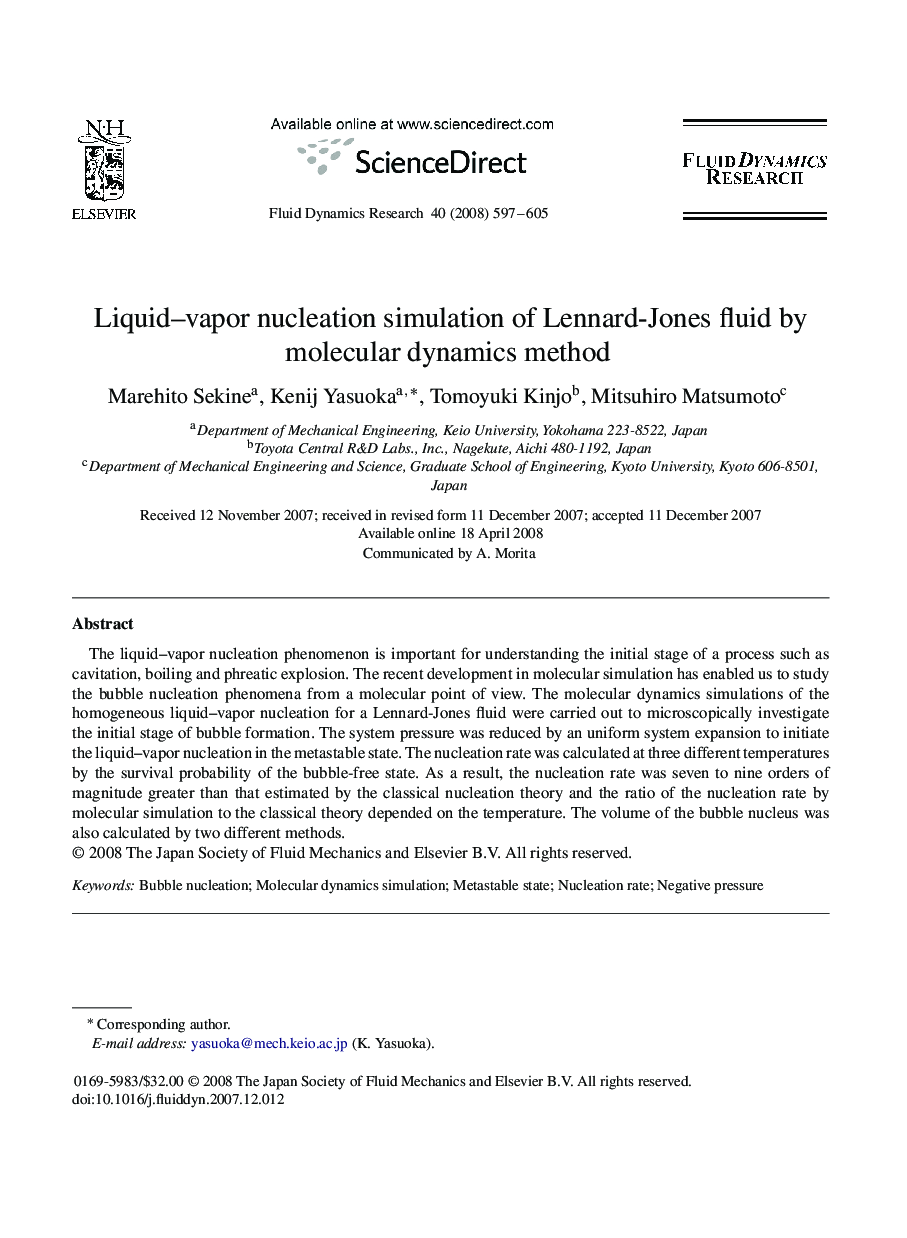| Article ID | Journal | Published Year | Pages | File Type |
|---|---|---|---|---|
| 773163 | Fluid Dynamics Research | 2008 | 9 Pages |
Abstract
The liquid-vapor nucleation phenomenon is important for understanding the initial stage of a process such as cavitation, boiling and phreatic explosion. The recent development in molecular simulation has enabled us to study the bubble nucleation phenomena from a molecular point of view. The molecular dynamics simulations of the homogeneous liquid-vapor nucleation for a Lennard-Jones fluid were carried out to microscopically investigate the initial stage of bubble formation. The system pressure was reduced by an uniform system expansion to initiate the liquid-vapor nucleation in the metastable state. The nucleation rate was calculated at three different temperatures by the survival probability of the bubble-free state. As a result, the nucleation rate was seven to nine orders of magnitude greater than that estimated by the classical nucleation theory and the ratio of the nucleation rate by molecular simulation to the classical theory depended on the temperature. The volume of the bubble nucleus was also calculated by two different methods.
Keywords
Related Topics
Physical Sciences and Engineering
Engineering
Mechanical Engineering
Authors
Marehito Sekine, Kenij Yasuoka, Tomoyuki Kinjo, Mitsuhiro Matsumoto,
